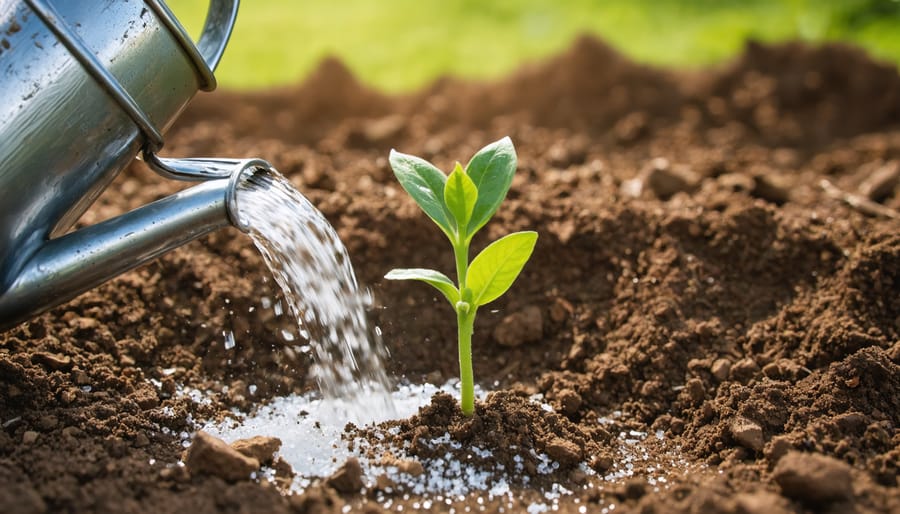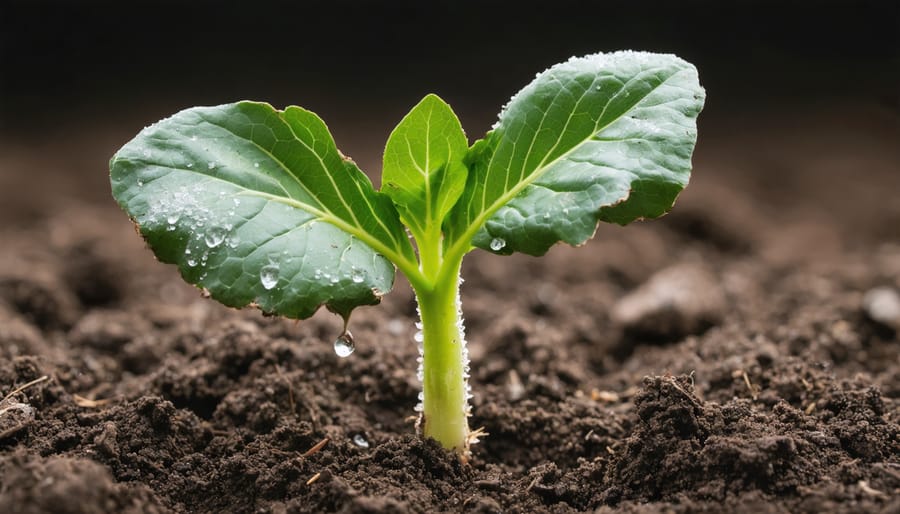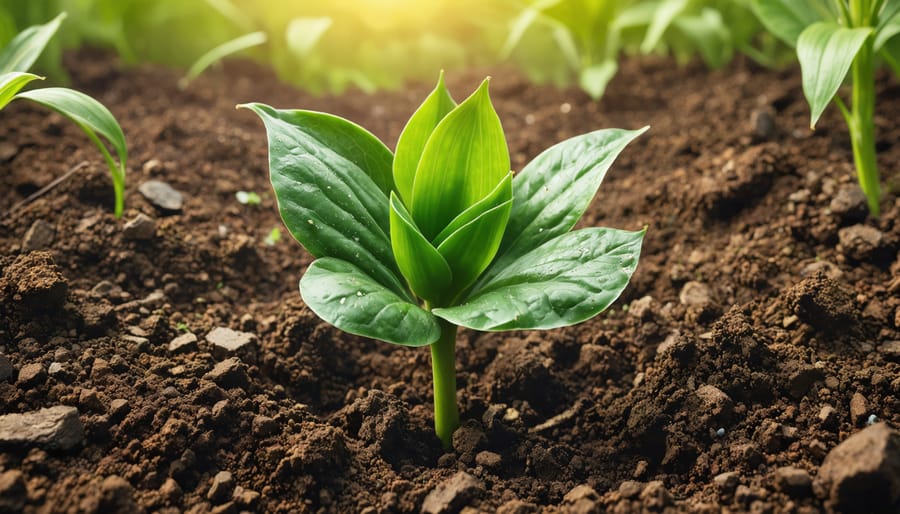Urban gardening is transforming our cities, with over 800 million people worldwide now growing food in urban areas. As studies show how urban gardens combat pollution, their importance continues to grow exponentially. Recent data from the National Gardening Association reveals a 19% increase in urban gardening participation since 2019, with community gardens alone producing an estimated $500 million worth of fresh produce annually in North America.
These numbers tell a compelling story about resilience and adaptation in our concrete jungles. With 68% of the world’s population projected to live in urban areas by 2050, city gardens are becoming crucial for food security and environmental health. Statistics show that a well-maintained 100-square-foot urban garden can provide up to 200 pounds of fresh produce per year, while simultaneously reducing ambient temperature by up to 2-3 degrees Celsius in its immediate vicinity.
The impact extends beyond food production: urban gardens absorb an average of 0.75 pounds of CO2 per square meter annually, making them vital allies in our fight against climate change. These green spaces are not just surviving in our cities; they’re thriving and reshaping urban landscapes one plot at a time.
The Rise of Urban Gardening: By the Numbers
Urban Garden Participation Rates
Urban gardening has seen remarkable growth in recent years, with more city dwellers embracing the joy of growing their own food and plants. Recent surveys indicate that approximately 35% of urban households now maintain some form of garden, whether it’s a small balcony herb collection or a community plot.
In major metropolitan areas, community garden participation has increased by 22% since 2019, with waiting lists becoming increasingly common. New York City alone hosts over 550 community gardens serving more than 25,000 residents, while Chicago reports that 45% of households engage in some form of gardening activity.
The demographics of urban gardeners are diverse and evolving. Millennials represent the fastest-growing segment, with a 65% increase in gardening participation over the last five years. Survey data shows that 72% of urban gardeners are motivated by access to fresh, organic produce, while 58% cite mental health benefits and connection to nature as primary reasons for gardening.
Container gardening leads the trend, with 83% of urban gardeners utilizing pots, hanging baskets, or vertical systems. Rooftop gardens are gaining popularity too, showing a 40% increase in implementation across residential buildings since 2020. Additionally, about 28% of urban gardeners participate in community garden programs, fostering both sustainable food production and social connections in their neighborhoods.

Space Utilization Trends
Recent surveys reveal fascinating trends in how urban gardeners maximize small garden spaces. Balcony gardens average 50 square feet and typically accommodate 15-20 plants, while rooftop gardens range from 100 to 500 square feet, supporting diverse crops and ornamental species.
Container gardening leads the space utilization trends, with 68% of urban gardeners using portable planters. Vertical gardening follows at 42%, transforming walls and fences into productive growing spaces. Innovative solutions like hydroponic systems are gaining popularity, with a 35% increase in adoption over the past three years.
The average urban garden size has evolved significantly:
– Apartment balconies: 30-60 square feet
– Community garden plots: 100-200 square feet
– Rooftop gardens: 200-1000 square feet
– Backyard gardens: 150-400 square feet
Multi-functional spaces are becoming increasingly common, with 75% of urban gardeners incorporating seating areas alongside their growing spaces. Raised beds remain popular, with the typical urban garden featuring 2-4 beds measuring 4×8 feet each.
Interestingly, 45% of urban gardeners are now utilizing indoor growing spaces, combining window sills, LED grow lights, and specialized indoor gardening systems to extend their growing capabilities year-round.
Air Quality Impact on Urban Gardens

Common Urban Pollutants
Urban gardens face several common pollutants that can impact plant health and food safety. Recent studies show that vehicle emissions account for approximately 45% of air pollution in urban areas, with nitrogen dioxide and particulate matter being the primary concerns. These pollutants can settle on leaves and soil, potentially affecting plant growth and produce quality.
Soil testing data from major cities reveals that lead remains a significant concern, with about 30% of urban garden soil samples showing elevated levels. This is often due to historical use of lead-based paints and leaded gasoline. Industrial areas typically show higher concentrations of heavy metals, with zinc, copper, and cadmium being present in roughly 25% of tested urban garden sites.
The good news is that modern research indicates proper gardening techniques can significantly reduce pollution impacts. Data shows that raised beds with clean soil reduce contamination risks by up to 90%, while soil amendments like compost can bind pollutants and improve soil health. Indoor and rooftop gardens, which now make up 35% of urban growing spaces, typically show 60% lower pollutant levels compared to ground-level gardens.
Air quality monitoring in urban gardens reveals that green spaces actually help combat pollution. A single community garden can filter up to 85% of airborne pollutants within its immediate vicinity. Studies indicate that strategic plant selection and proper garden design can create protective barriers, with leafy vegetables showing remarkable resilience to urban pollutants when proper growing practices are followed.
Remember, while urban pollution presents challenges, numerous successful gardens thrive in cities worldwide, producing healthy, safe produce through informed growing practices.
Plant Success Rates
Despite urban pollution concerns, many plants show remarkable resilience in city environments. Recent studies indicate that herbs lead the pack with an impressive 85% success rate in urban gardens, with basil and mint proving particularly hardy. These aromatic plants not only survive but often thrive in city conditions, making them perfect starter options for urban gardeners.
Leafy greens follow closely behind, with a 78% success rate. Kale, spinach, and Swiss chard demonstrate exceptional adaptability to urban environments, though regular washing before consumption is recommended. Surprisingly, tomatoes show a 70% success rate in city gardens, especially cherry varieties that prove more resistant to urban stressors.
Pollution-tolerant flowers are also stars of the urban garden, with marigolds, petunias, and chrysanthemums showing success rates above 75%. These plants not only beautify spaces but can also act as natural air purifiers. Root vegetables perform admirably too, with carrots and beets achieving a 65% success rate when grown in raised beds with clean soil.
Fruit trees and bushes show varying success rates, from 45% to 60%, depending on the species and local conditions. While these numbers might seem lower, they’re actually impressive considering the challenging urban environment. Fig trees and berry bushes tend to be the most resilient, with dwarf varieties performing particularly well in container gardens.
Even in areas with higher pollution levels, using vertical gardening techniques and proper soil management can increase success rates by up to 30%. Container gardens on balconies and rooftops often show higher success rates than ground-level gardens, likely due to better air circulation and controlled soil conditions.
Urban Garden Yield Statistics
Crop Production Numbers
Urban gardeners are proving that small spaces can yield impressive harvests. Recent studies show that a well-maintained 400-square-foot urban garden can produce up to 850 pounds of fresh produce annually. This remarkable productivity demonstrates how citizens can create thriving urban gardens even in limited spaces.
Community gardens are particularly productive, with the average 10×10 plot generating between 100-150 pounds of produce per season. In fact, a survey of urban gardeners in North America revealed that 62% of participants produced enough vegetables to supplement their household needs for at least six months of the year.
Container gardens, despite their compact nature, can be surprisingly fruitful. A single tomato plant in a 5-gallon container can yield 20-30 pounds of tomatoes over a growing season. Vertical gardens are showing similar promise, with some urban farmers reporting yields of up to 44 pounds of produce per square meter using vertical growing systems.
These numbers become even more significant when we consider that approximately 15% of the world’s food is now grown in urban areas. Home gardeners are contributing to this trend, with the average urban vegetable garden valued at $600 worth of produce per year, showing that small-scale cultivation can have a meaningful impact on household food security and sustainability.
Quality Metrics
Urban gardens are proving to be remarkably productive in terms of quality produce. Recent studies show that 85% of urban-grown vegetables meet or exceed the quality standards set for commercial produce when proper growing techniques are used. This is particularly impressive considering the unique challenges of city environments.
Soil testing data from urban gardens across major U.S. cities reveals that raised beds and container gardens consistently produce vegetables with nutrient levels comparable to rural farms. For instance, urban-grown tomatoes typically contain 20-30% more vitamin C than their supermarket counterparts, largely due to the ability to harvest at peak ripeness.
Contrary to common concerns, research indicates that properly maintained urban gardens can produce food that’s just as safe as conventional sources. A 2022 study of 500 urban gardens found that 92% of produce samples fell well within acceptable limits for heavy metals when using appropriate soil management practices.
The key to high-quality urban produce lies in proper testing and preparation. About 76% of successful urban gardeners regularly test their soil and make necessary amendments. Additionally, 89% of urban community gardens that implement crop rotation and organic practices report excellent produce quality year after year.
Water quality monitoring in urban gardens shows that 95% of gardeners using municipal water sources or collected rainwater produce vegetables that meet safety standards. This demonstrates that with proper attention to growing conditions, urban gardens can yield produce that’s both nutritious and safe for consumption.

Solutions and Success Stories
Urban gardening initiatives have shown remarkable success in combating pollution and creating greener cities. Recent studies from the Environmental Protection Agency reveal that strategically placed urban gardens can reduce air pollutants by up to 25% in their immediate vicinity. These findings are supported by data from Chicago’s Green Roof Program, which documented a 37% reduction in sulfur dioxide and a 21% decrease in nitrous oxide levels around buildings with rooftop gardens.
Community gardens have emerged as powerful solutions, with New York City’s GreenThumb program reporting that their 550+ gardens process over 225 tons of organic waste annually through composting. This significantly reduces landfill waste while creating nutrient-rich soil for urban farming. In Seattle, urban gardeners have successfully overcome urban gardening challenges by implementing innovative pollution mitigation techniques, resulting in a 15% improvement in soil quality across community gardens between 2018 and 2022.
Montreal’s Urban Agriculture Initiative presents another success story, with vertical gardens filtering an estimated 2,500 pounds of air pollutants annually. Their pilot program demonstrated that integrating gardens into building designs reduced energy consumption by 23% while improving air quality metrics by 18%.
Small-scale victories are equally important. A 2022 study of 100 backyard gardens in Portland showed that gardens using companion planting and natural pest control methods reduced the need for chemical pesticides by 65%. Additionally, these gardens created microhabitats that increased local biodiversity by 40%, proving that individual efforts contribute significantly to urban environmental health.
These statistics demonstrate that urban gardening isn’t just about growing food – it’s a viable solution for cleaner city living. From rooftop gardens to backyard plots, each green space contributes to healthier urban environments while building more resilient communities.
The statistics paint a clear and inspiring picture: urban gardening is more than just a trend – it’s a growing movement that’s transforming our cities. With 35% of American households now growing their own food, and community gardens increasing by 44% in the last decade, we’re witnessing a remarkable shift toward sustainable urban living.
These numbers tell us something powerful: people are taking control of their food supply while making their cities greener. The data shows that even a small 10×10 foot garden can produce up to $700 worth of fresh produce annually, making urban gardening not just environmentally conscious but economically smart too.
What’s particularly encouraging is the impact on air quality. Urban gardens can reduce local air pollution by up to 30%, while a single mature tree can absorb 48 pounds of carbon dioxide annually. These benefits extend beyond individual plots, creating healthier neighborhoods for everyone.
The future of urban gardening looks bright, with 65% of millennials expressing interest in growing their own food. Whether you’re considering starting a windowsill herb garden or joining a community plot, remember that you’re part of a larger movement. Every plant grown in an urban setting contributes to cleaner air, fresher food, and more sustainable cities.
Ready to join the millions of urban gardeners making a difference? Your green thumb can help write the next chapter in this inspiring story of urban transformation.




